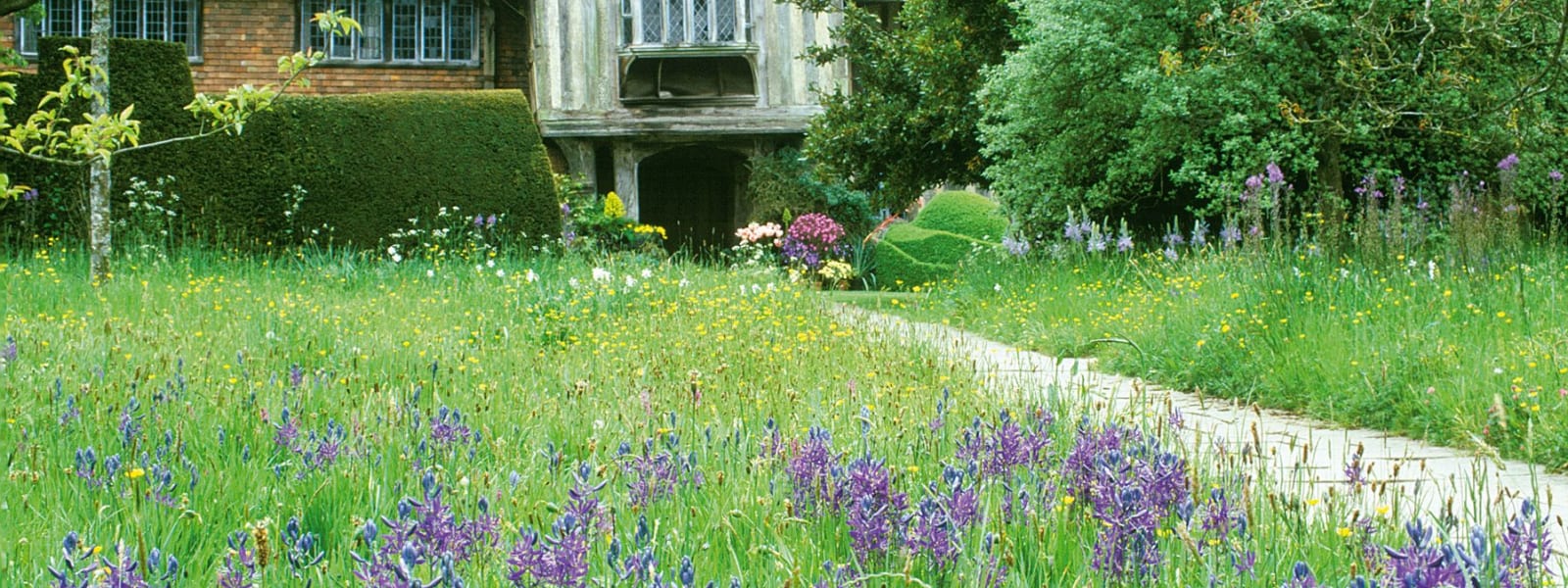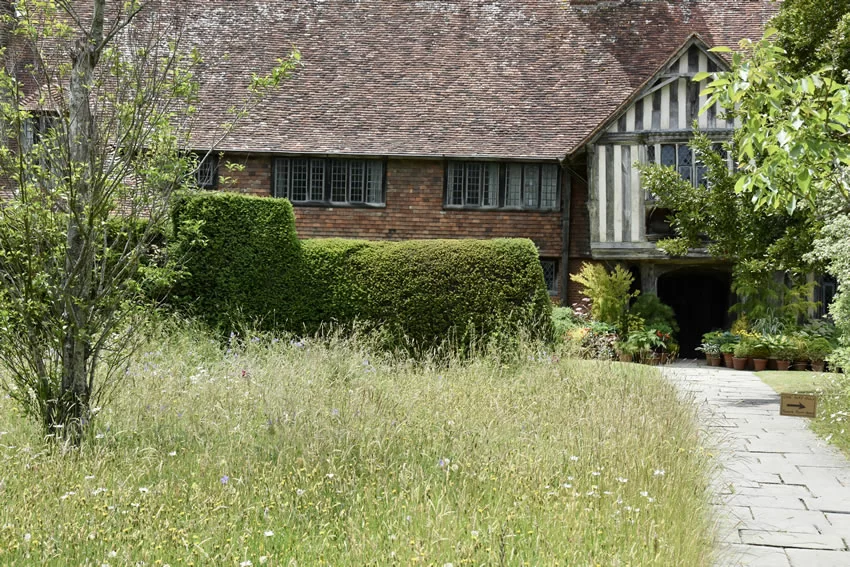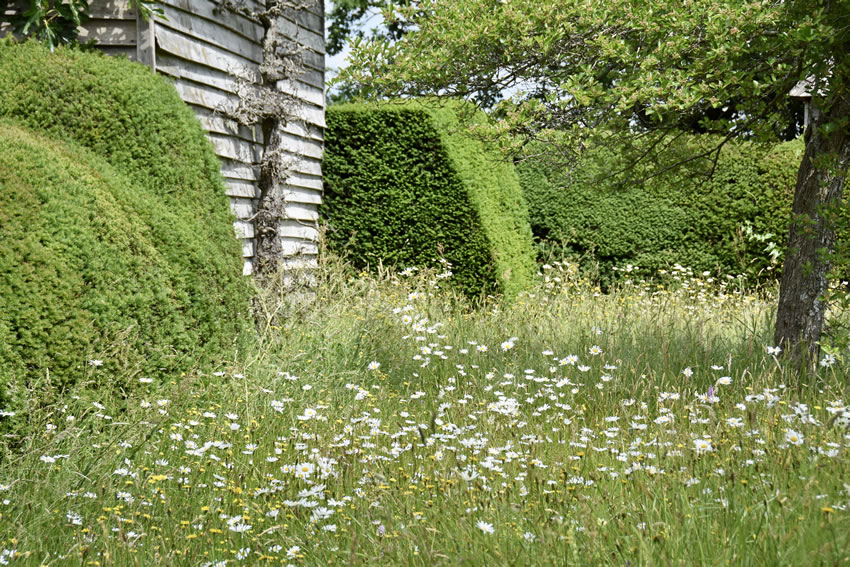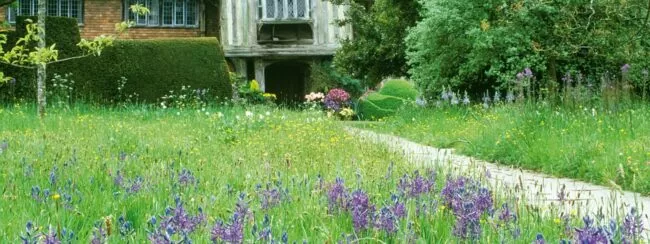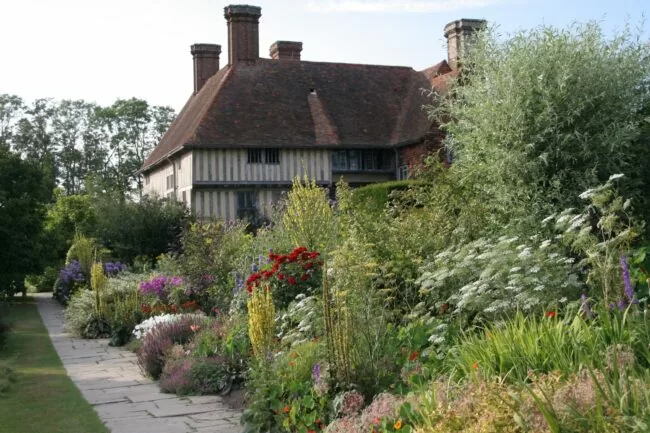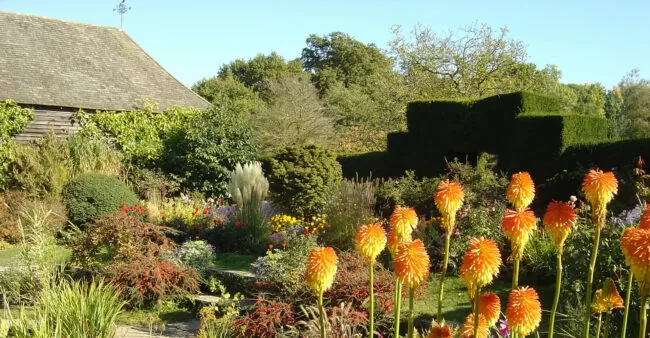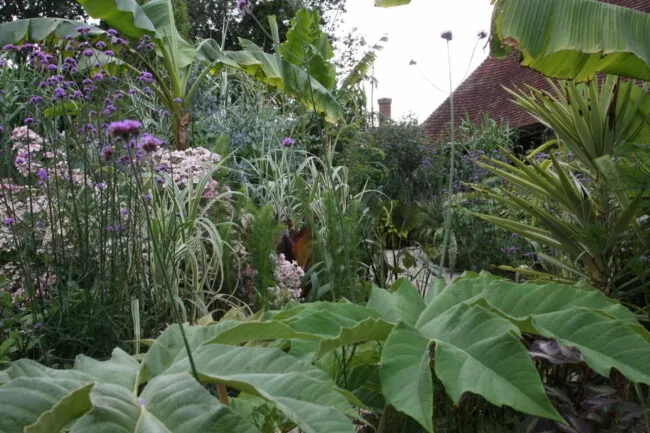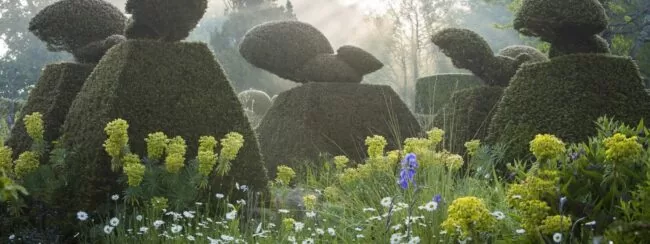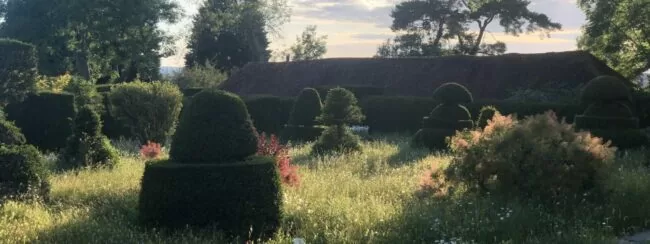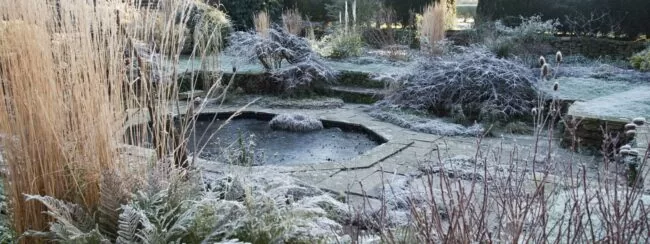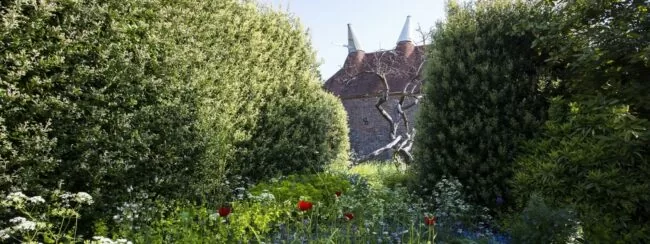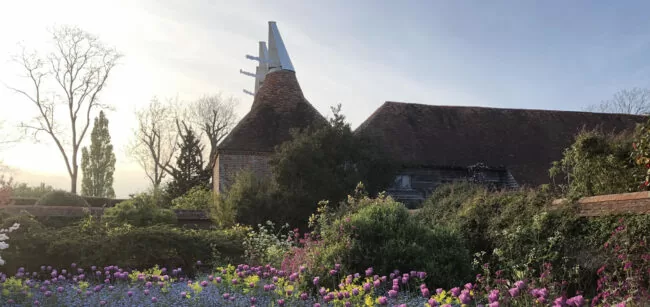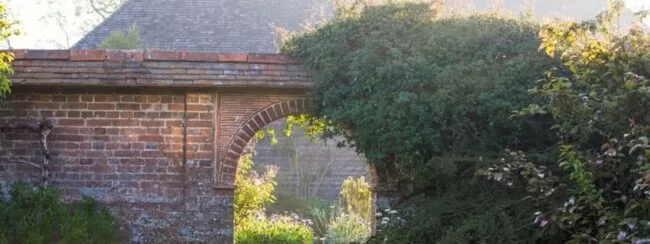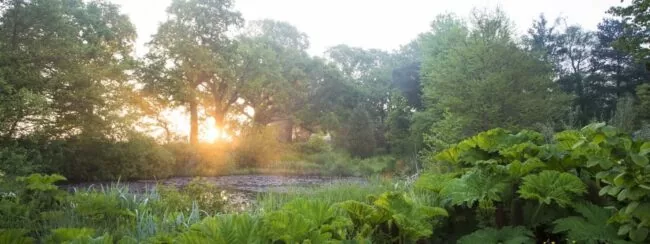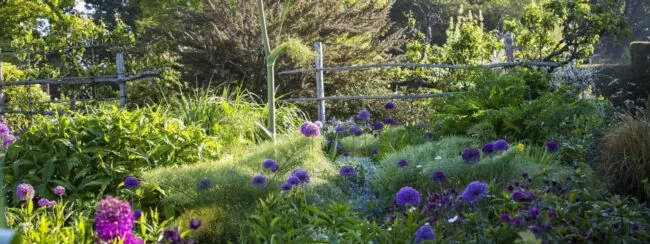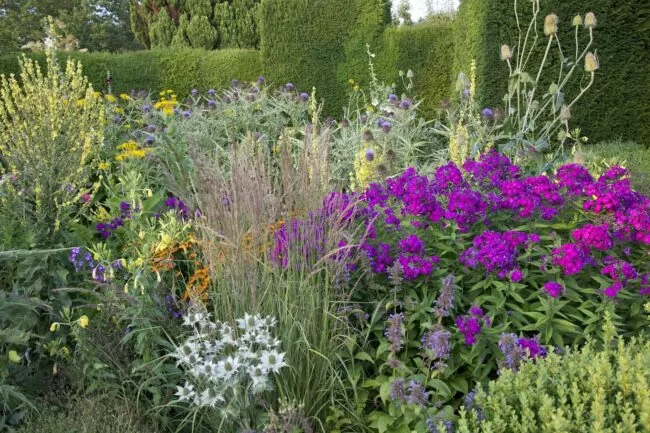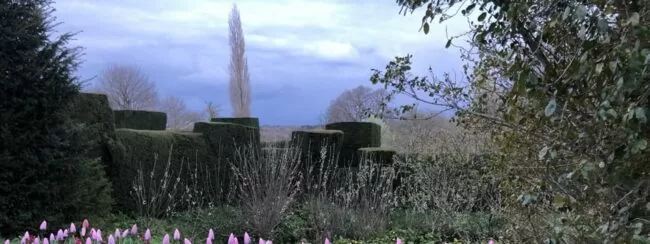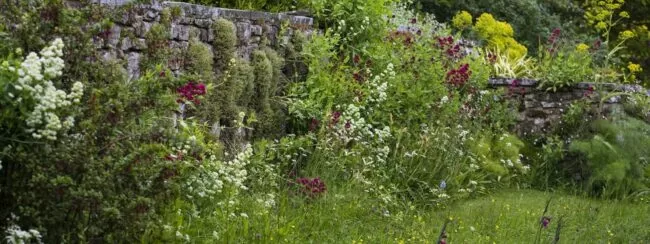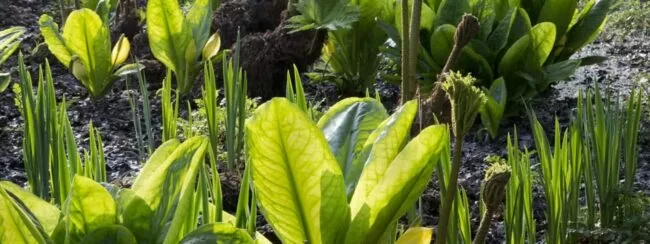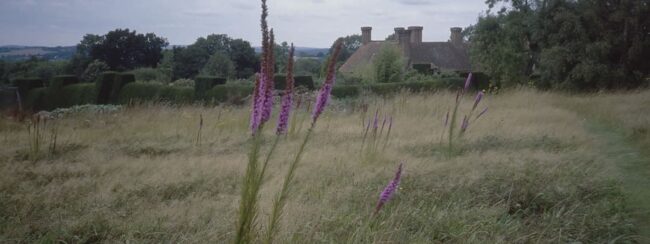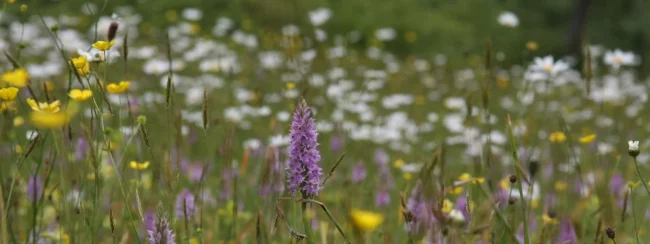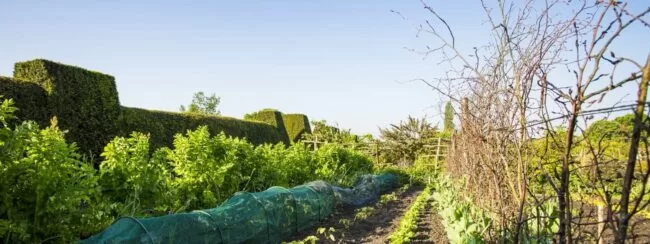The Front Meadow
Great Dixter’s garden in Christopher Lloyd’s words.
Your first sight, on entering the front gate, is of two areas of rough grass, on either side of the path to the house. These, and several other, similar areas, scattered through the garden, bear witness to my mother’s love of this kind of meadow gardening. They are not just plots of grass that we gave up mowing for lack of labour but were intended from the first.
They contain a rich assortment of plants that enjoy growing in turf and the grass is not cut until all its contents have completed ripening and shedding their seed.
Much of this is native material that needed no introduction. The poorer the soil, the richer the tapestry that can be created. If the soil is fertile, a few coarse elements like cow parsley, yorkshire fog, nettles and docks, will dominate and smother all else.
Orchids native to the Weald are a particular success; early purples, green winged, twayblade and spotted (Dactylorhiza fuchsii). It is a sanctuary for them, since changed farming and woodland practices have eliminated most of their natural habitats.
My mother used to raise wild daffodils (Narcissus pseudonarcissus) and snakeshead fritillaries (Fritillaria meleagris) from seed, prick out the seedlings and eventually plant them out. They have been a notable success.
Exotics like the North American bulb, Camassia quamash, have also thrived. Their spikes of starry blue flowers are a feature alongside the front path in May. We keep experimenting with other ingredients, looking for those that will take care of themselves, once given a start.
